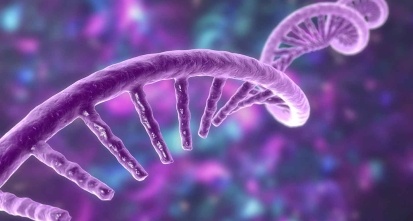Gain new perspectives for faster progress directly to your inbox.

Since the start of the pandemic, more than 11.4 million children have tested positive for COVID-19 in the U.S., with children under 4 accounting for more than 1.6 million of those cases and 3.2% of total hospitalizations due to COVID-19. As the Food and Drug Administration (FDA) and Centers for Disease Control (CDC) have begun reviewing the safety data for Pfizer and BioNTech’s COMIRNATY® COVID vaccines for Emergency Use Authorization (EUA) with children under the age of 5, several key questions have emerged as parents learn more and decide whether to vaccinate their children under the age of 5. While dosage amounts are different for children under the age of 5, understanding the types of ingredients that are in COVID vaccines will enable parents to make more informed decisions.
For children under 5, are the vaccine ingredients the same?
Not exactly; while the active ingredients of the Pfizer and BioNTech COVID-19 vaccines are identical to the current adult vaccines, the only difference is in the buffer called tromethamine (Tris) used that allows for the children’s vaccine to remain refrigerated longer. While tromethamine may not sound like a common ingredient, from a scientific perspective, it was introduced into the world’s published literature in 1944 and is often used in cosmetics, serums, and vaccines since 1978.
The other critical difference is in the dosage of 3 µg that will be administered in 3 doses for children under the age of 5 vs. the 10 µg dose that is given twice to children ages 5 and older and the 30 µg dose given 3 times to those ages 12 and above.
How common are the ingredients of the COVID-19 vaccines?
To discover how common an ingredient is, CAS offers a unique perspective. For over 100 years, whenever new chemistry-related scientific research has been published, CAS has captured that information in the CAS Content Collection™, allowing us to see when a chemical compound first shows up in research and every time thereafter. As a result, the CAS Content Collection shows us how often a compound is studied or used in research since each compound is given its own Registry Number. By connecting each COVID-19 vaccine ingredient to its prevalence in scientific literature, we can gain insight as to how scientifically common it is.
In fact, ingredients that are most scientifically common also appear in our homes, primarily as ingredients in foods and sometimes skincare products. On the other hand, the vaccine ingredients which appear less in the CAS Content Collection (like lipids) are newer and have fewer and more specific applications. Nonetheless, our content helps us better understand these unique ingredients.
Everyday common household ingredients
The most common ingredients are easily found within our own pantries. Some, in singular form like salt or sugar, or within popular food and drink items like Gatorade or Jell-O. To see how prevalent an ingredient is in the CAS Content Collection, we consider the number of times its Registry number has been referenced in the world’s publications and will categorize them as:
- High >50,000
- Medium: 10,000-50,000
- Low: 0-10,000
| Ingredient (CAS Registry Number) |
Prevalence |
Vaccine Use | Found In |
| Ethanol 64-17-5 |
High |
Janssen | alcoholic beverages, hand sanitizers |
| Acetic Acid 64-19-7 |
High |
Moderna | distilled white vinegar |
| Sodium Chloride, 7647-14-5 |
High |
Pfizer Janssen |
table salt |
| Sucrose 57-50-1 |
High |
Pfizer Moderna |
sugar |
| Potassium chloride 7447-40-7 |
High |
Pfizer | salt replacer in low-sodium foods; baby formula |
| Cholesterol 57-88-5 |
High |
Pfizer Moderna |
occurs naturally in humans and animals. Common foods include cheese, eggs, meat. |
| Monobasic Potassium Phosphate 7778-77-0 |
High |
Pfizer | Gatorade |
| Sodium acetate 127-09-3 |
High |
Moderna | salt and vinegar chips |
| Polysorbate-80 9005-65-6 |
High |
Janssen | sorbitol-based emulsifier: used in ice creams, topical use includes soaps |
| Citric Acid monohydrate* 5949-29-1 |
High |
Janssen | Naturally occurring acid in citrus fruits. Anhydrous form used in bath bombs, or as a food additive to add tartness. Soda |
| dibasic Sodium Phosphate dihydrate 10028-24-7 |
Medium |
Pfizer | Jell-O |
| Trisodium Citrate dihydrate* 6132-04-3 |
Medium |
Janssen | Jell-O, Sprite, Gatorade |
* Includes occurrence of ingredient crystallized with one or two water molecules and occurrence without water.
Scientifically common Ingredients
In this category, we find those ingredients that are a little more specialized but still are used in a variety of applications. They are far more common in medicine and/or research than in our cupboards and have been so for several decades at least. The most common ingredient is 2-hydroxypropyl beta-cyclodextrin(HPBCD), a fascinating ring-shaped compound, derived from beta-cyclodextrin (BCD) that forms naturally from starch. Not only has BCD been studied over 50,000 times, but there are over 26,000 compounds based off it. Newer on the scene is 1,2-distearoyl-sn-glycero-3-phosphocholine (DSPC), a phosphatidylcholine that can occur naturally—in a mixture of phosphatidylcholines and other lecithins—in foods like soybeans. Its pure form, whether isolated or synthetic, has been studied in vaccines or lipid nanoparticles for over two decades. Tromethamine and tromethamine HCl, stabilizers in the Moderna vaccine, also make the list as established vaccine ingredients as well as cosmetics ingredients.
| Ingredient (CAS Registry Number) |
Prevalence |
Vaccine Use | Examples |
| 2-hydroxypropyl-ß-cyclodextrin 7585-39-9 |
High |
Janssen | naturally converted from starch by enzymes; widely used excipient; other vaccines since 1984 |
| Tromethamine 77-86-1 |
Medium |
Moderna | cosmetics, serums; other vaccines since 1978 |
| Tromethamine hydrochloride 1185-53-1 |
Medium |
Moderna | cosmetics, serums; treats metabolic acidosis; other vaccines since 1997 |
| 1,2-distearoyl-sn-glycero-3-phosphocholine 816-94-4 |
Medium |
Pfizer Moderna |
a phosphatidylcholine (PC) occurring naturally in soybeans with other PCs; pure DSPC used in liposomes or lipid nanoparticles; other vaccines since 1998 |
Unique Ingredients
Ingredients that are less common are the specialized lipids for the Moderna and Pfizer mRNA vaccines. These lipids make up the lipid nanoparticles (LPNs) that protect the spike protein mRNA and help carry it safely into our cells. LPN technology has been around for nearly 30 years, with cancer research playing a critical role in its innovation. To make mRNA vaccines a reality, the right lipids were needed to be discovered and developed. It is important to note that, while still new, these lipid ingredients still pre-date the COVID-19 pandemic.
The virus-related particles are the only truly new ingredients of vaccines, having been developed after the beginning of the pandemic. For Pfizer and Moderna, this consists of an mRNA strand encoding the viral spike protein of COVID-19. The mRNA used is based off the original variant of SARS-CoV-2; if newer vaccines are released that target later variants of the coronavirus, such as Omicron, this can be done by using a newer sequence of mRNA. The mRNA vaccines do not cause any genetic changes to our cells, because mRNA only stays in the cytosol of the cells and does not interfere with DNA in the cell nucleus. Like the mRNA vaccines, the Johnson & Johnson vaccine provides a genetic template to cells for producing the spike protein of the coronavirus, using a modified adenovirus-26 (ad26) vector virus that carries a piece of DNA. Because the mRNA and DNA are specific to COVID-19, these ingredients have been developed since the start of the pandemic. Similar mRNA vaccines using the same LPN technology have been studied since 2016, and an Ebola viral vector vaccine using ad26 was in development also as early as 2016.
| Ingredient (CAS Registry Number) |
Prevalence |
Vaccine Use | Other Uses |
| 2[(polyethylene glycol (PEG))-2000]-N,N-ditetradecylacetamide 1849616-42-7 |
Low |
Pfizer | other vaccine studies include HIV, rotavirus; cancer therapies |
| (4-hydroxybutyl)azanediyl)bis(hexane-6,1-diyl)bis(2-hexyldecanoate) 2036272-55-4 |
Low |
Pfizer | other mRNA vaccine studies include HIV, influenza, rabies, yellow fever, RSV, cancer |
| PEG2000-DMG: 1,2-dimyristoyl-rac-glycerol, methoxypolyethylene glycol 160743-62-4 |
Low |
Moderna | targeted therapies, including targeted chemotherapy |
| SM-102: heptadecan-9-yl 8-((2-hydroxyethyl) (6-oxo-6-(undecyloxy) hexyl) amino) octanoate 2089251-47-6 |
Low |
Moderna | other mRNA vaccine studies include Zika virus, tropical viruses, cancer vaccines |
| mRNA encoding the SARS-CoV-2 spike protein | - | Pfizer Moderna |
specific only to COVID-19 vaccines. |
| recombinant, replication-incompetent adenovirus type 26 expressing the SARS-CoV-2 spike protein | - | Janssen | specific only to COVID-19 vaccine; the adenovirus portion has also been used in the design of an Ebola vaccine |
Owing to the intense research surrounding the COVID-19 pandemic, the prevalence of these unique ingredients in the CAS Content Collection is growing all the time. No doubt, as time goes on, more uses for the LPNs and ad26 viral vectors will be developed.
Summary
The formulations and ingredients of the COVID-19 vaccines have been under a lot of scrutiny but as the EUA is potentially pending for Pfizer and BioNTech’s COMIRNATY® children under the age of 5, understanding how common some of these ingredients may prove helpful in allowing parents to make educated decisions. For those who are seeking greater detail on all ingredients, download this table of all the ingredients by vaccine.
For even more on COVID-19, visit the CAS Covid-19 Resources collection for the latest data sets, bioindicator explorer, and peer-reviewed articles.



